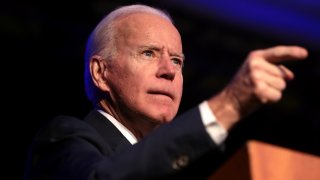The Federal Reserve's Interest Rate Hikes Are Now Done
A source of comfort in today’s numbers is that the Fed is now likely to do less damage to the economy than it might otherwise have done by another interest rate hike. While the Fed is highly unlikely to cut interest rates anytime soon, at least it will not raise interest rates further.
There is some good news and some bad news about today’s weaker-than-expected jobs report number.
The good news is that the Federal Reserve is probably done with its aggressive interest rate hiking cycle. That means we can expect considerable mortgage and auto-loan interest rate relief and less competition from high interests to stock market valuations. The bad news is that the weak jobs number is likely an indication of a rapidly slowing US economy that could be well on its way to an economic recession in the first half of next year.
One of the characteristics of today’s Federal Reserve is that it is highly data-dependent in making its interest rate decisions. That is to say, it makes its decisions to raise interest rates largely on the basis of whether the most recent inflation data show that inflation is picking up and whether the most recent jobs and wage data show that the labor market is continuing to be tight. In behaving in this way, the Fed effectively pays little heed to Milton Friedman’s teaching that monetary policy operates with long and variable lags of anywhere between 12 to 18 months.
At this week’s press conference, Fed Chair Jerome Powell was at pains to indicate that the Fed thought that inflation was running too high and that the Fed was keeping open the option to raise interest rates at the next Fed meeting. Today’s weaker-than-expected jobs numbers make it very unlikely that the Fed will raise interest rates at its next policy meeting. Not only did the pace of job gains slow dramatically from 300,000 in September to 150,000 in October, but the unemployment rate rose to 3.9 percent, and the year-over-year pace of wage growth slowed to 4.0 percent.
The financial markets have welcomed this news as indicated by their driving market interest rates considerably lower. They now consider only a very low probability that the Fed will raise interest rates again this year while they anticipate that the Fed will start cutting interest rates next year. This has now induced the markets to drive the all-important 10-year Treasury bond rate down from a recent high of 5 percent to something in the region of 4.5 percent. That in turn should provide considerable relief to home buyers, who will no longer have to pay 8 percent interest rates on their mortgages.
Since March 2022, the Fed has raised interest rates by 5 ¼ percentage points. That has constituted the most aggressive interest rate hiking cycle in the post-war period. In addition, after having allowed the broad money supply to balloon by a cumulative 40 percent between the start of 2020 and the end of 2021, the Fed has now allowed the broad money supply to contract by around 3 percent. Such a broad money supply contraction is unprecedented since the Fed started publishing this data in 1959.
The bad news about today’s weaker than expected jobs numbers is that they might be an early warning sign that the Fed has engaged in monetary policy overkill to regain inflation control. It is not simply that the pace of job growth, which itself is a lagging economic indicator, has halved in a single month. It is that this has occurred at a time when the full effects of the last year’s monetary policy tightening and of the recent sharp tightening in monetary conditions are yet to be felt.
A source of comfort in today’s numbers is that the Fed is now likely to do less damage to the economy than it might otherwise have done by another interest rate hike. While the Fed is highly unlikely to cut interest rates anytime soon, at least it will not raise interest rates further. That should provide welcome relief to automobile and home buyers. It should also reduce the risk of another financial crisis that could be caused by a wave of loan defaults especially in the commercial real estate space.
About the Author
American Enterprise Institute senior fellow Desmond Lachman was a deputy director in the International Monetary Fund’s Policy Development and Review Department and the chief emerging-market economic strategist at Salomon Smith Barney.
Image Credit: Creative Commons.
b4f3.jpg)

